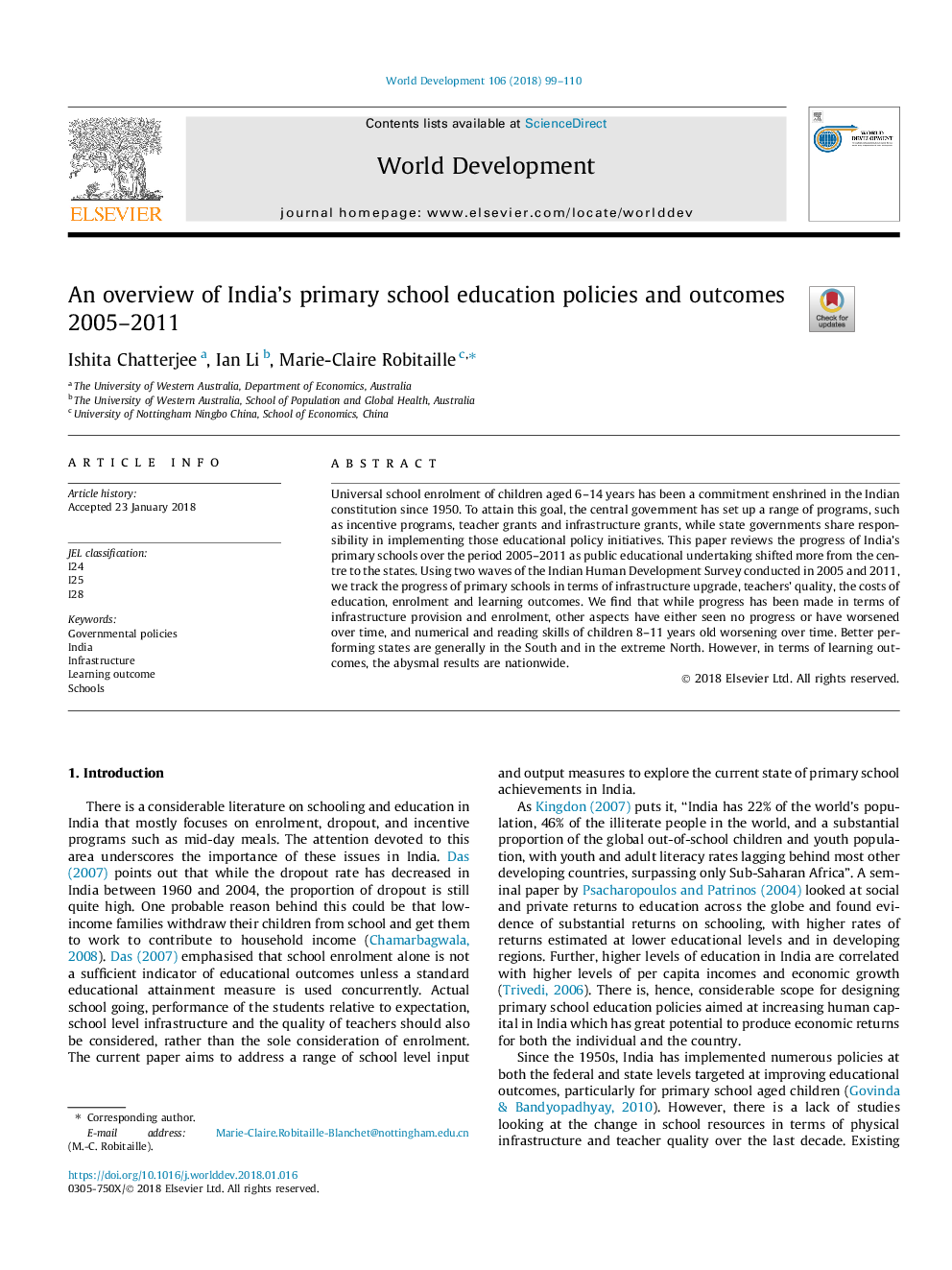| Article ID | Journal | Published Year | Pages | File Type |
|---|---|---|---|---|
| 7391792 | World Development | 2018 | 12 Pages |
Abstract
Universal school enrolment of children aged 6-14â¯years has been a commitment enshrined in the Indian constitution since 1950. To attain this goal, the central government has set up a range of programs, such as incentive programs, teacher grants and infrastructure grants, while state governments share responsibility in implementing those educational policy initiatives. This paper reviews the progress of India's primary schools over the period 2005-2011 as public educational undertaking shifted more from the centre to the states. Using two waves of the Indian Human Development Survey conducted in 2005 and 2011, we track the progress of primary schools in terms of infrastructure upgrade, teachers' quality, the costs of education, enrolment and learning outcomes. We find that while progress has been made in terms of infrastructure provision and enrolment, other aspects have either seen no progress or have worsened over time, and numerical and reading skills of children 8-11â¯years old worsening over time. Better performing states are generally in the South and in the extreme North. However, in terms of learning outcomes, the abysmal results are nationwide.
Related Topics
Social Sciences and Humanities
Economics, Econometrics and Finance
Economics and Econometrics
Authors
Ishita Chatterjee, Ian Li, Marie-Claire Robitaille,
